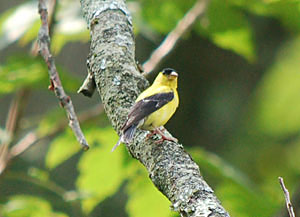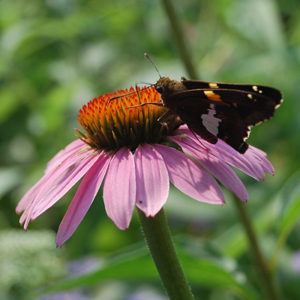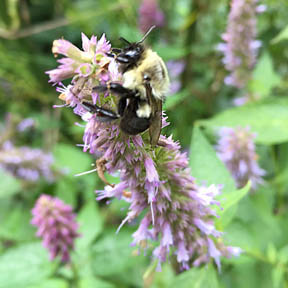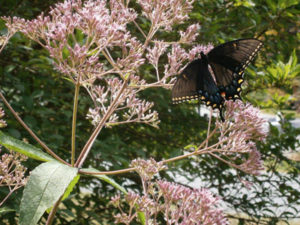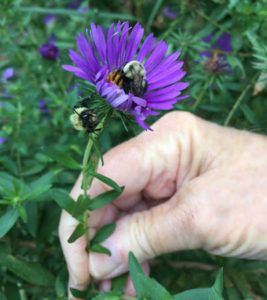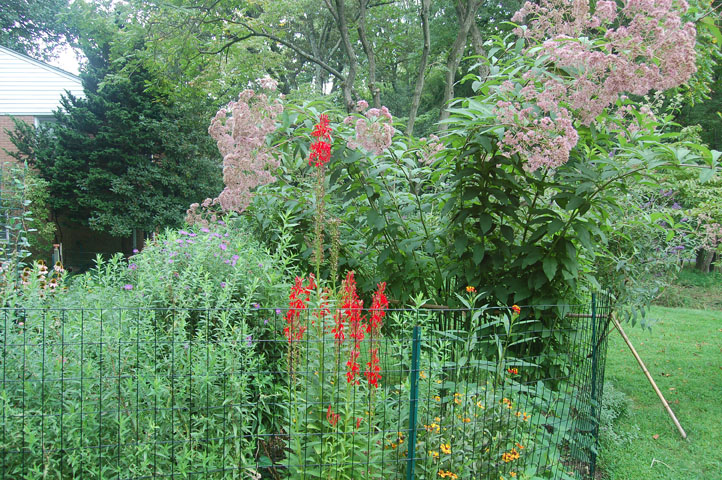 Early in 1958 after living for 6 months in her new house on Berwick Road Rachel Carson started the four year long writing project that would become her renowned Silent Spring. (p. 251, Always, Rachel.) Rachel’s observations of the nature she loved from the wide windows of her home provided joyful relief from the gathering of somber subject matter for her new book and served to remind her of a compelling reason for accepting this challenge –the urgent need to protect life on the planet from toxic chemical pesticide threats. In contemplating the situation, Rachel wrote to a friend, “I think there is still a place for wonder.” (p. 249, Always, Rachel)
Early in 1958 after living for 6 months in her new house on Berwick Road Rachel Carson started the four year long writing project that would become her renowned Silent Spring. (p. 251, Always, Rachel.) Rachel’s observations of the nature she loved from the wide windows of her home provided joyful relief from the gathering of somber subject matter for her new book and served to remind her of a compelling reason for accepting this challenge –the urgent need to protect life on the planet from toxic chemical pesticide threats. In contemplating the situation, Rachel wrote to a friend, “I think there is still a place for wonder.” (p. 249, Always, Rachel)
After Silent Spring’s publication, Rachel Carson eagerly set about converting into book form her earlier article about ways in which adults can encourage and share children’s delight in the natural world. She called it The Sense of Wonder.
Were Rachel Carson to inspect her Berwick Road property during the end days of August, 2017, she would find there a fenced off section of what once had been turf now set aside for over 30 species of perennial flowering plants and a few annuals. This is the two-year old garden for pollinators where on most sunny late summer days winged visitors collect nectar and/or pollen (bees, wasps, butterflies and hummingbirds), extract seeds from flower heads (goldfinches), feed on aphids (ladybugs) and drink from the basin of fresh water in the shade of the winterberry shrub (cat birds, cardinals, wrens and others). This special garden also provides sanctuary for some of our most imperiled insect allies because it is maintained without chemical pesticides. With its end of summer finery attracting an amazing array of life, the pollinator garden can evoke a sense of wonder in those observers who walk its paths.
In late August this living tribute to Rachel Carson displays a palette that the artist Monet might wish for: the lavender blue of the mistflower plant, the brilliant red of the cardinal flower, the purple of the New England aster and anise hyssop, the pink of the Joe Pye weed, the yellow of the partridge pea, the orange of the low-growing butterfly weed, the beige of the spotted mint the pale green of the mountain mint and the pale pink of the obedient plant and the various shades of other blooming perennials. A handful of annuals in pink, yellow and red add to this celebration of color.
Note: The first goldenrods have just bloomed others will soon bring forth blossoms as will turtlehead plants (both the white and the pink). Later in October we, and the bees, will welcome the dendranthema mum blooms.
What Pollinators Prefer
The plant most popular with bees, wasps and small butterflies throughout the summer continues to be the anise hyssop. Bees, Goldfinch and swallowtail butterflies have visited the Joe Pye weed as well as the purple cone flower. In midsummer the swamp milkweed and mountain mint were both popular destinations for bees and wasps. Bees also visit the New England aster and wasps are especially fond of the spotted mint. Hummingbirds favor the cardinal flower plant.
Pollinators and People Together
The seven monarch butterfly caterpillars feeding on the swamp milkweed and the various pollinating insects stopping by the garden on the last week of August don’t seem to mind that humans occasionally appear along the wood-chip-covered pathways of their sanctuary to work quietly or watch fascinated by the diverse activity all around. Occasionally small orange butterflies or a curious bee may check out a person but the wild ones mostly seem not to be distracted by our human intrusions into their work site, being busy with collecting food for their young.
Mosquitoes on the other hand, are not at all shy about approaching human visitors but they can be held at bay by long sleeved shirts and small amounts of cedar oil or other non-chemical repellant sprays.
Carson House Pollinator Garden Plants Flowering in Late Summer
| Common Names | Botanical Names |
| anise hyssop | Agastache foeniculum |
| butterfly weed | Asclepias tuberosa |
| cardinal flower | Lobelia cardinalis |
| stiff goldenrod | Solidago rigida |
| rough stemmed goldenrod | Solidago rugosa |
| Joe Pye weed | Eupatorium maculatum |
| mistflower | Eupatorium coelestinum |
| short-toothed mountain mint | Pycnanthemum multicum |
| spotted mint | Monarda punctata |
| New England aster | Aster novae-angliae |
| obedient plant | Physostegia virginiana |
| partridge pea | Chamaecrista fasciculata |
| pink turtlehead | Chelone lyonii |
| purple coneflower | Echinacea purpurea |
| white turtlehead | Chelone glabra |
by Diana Post with help from Munro Meyersburg
8-30-17

